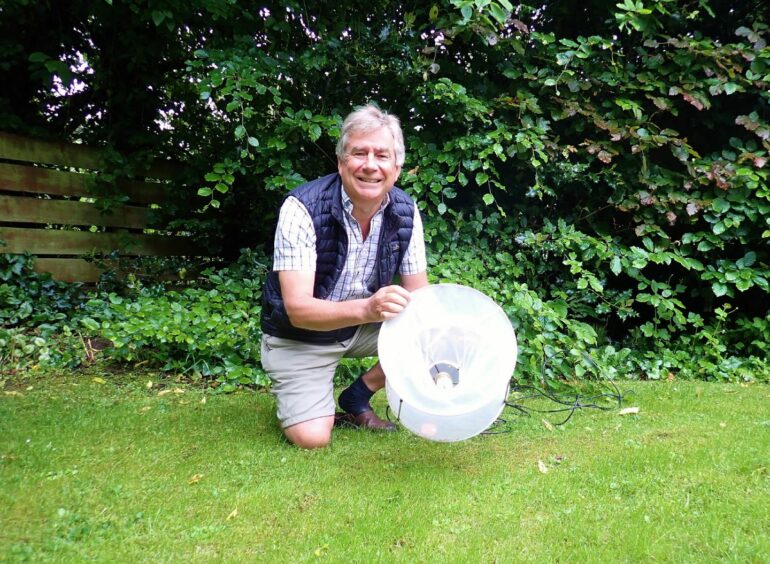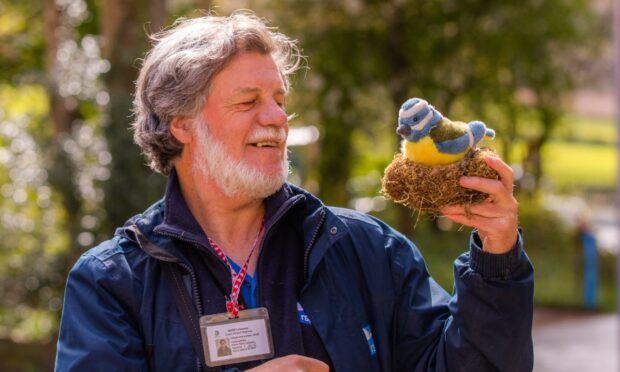It is always with a mounting sense of anticipation that I approach my garden moth light-trap early in the morning to discover the gleaming jewels that lie cradled within.
It is a feeling a fisherman must experience when hauling in a net or creel – what will be there?
Thus, there was an initial sense of disappointment when I checked the contents of my trap recently – there were a few peppered moths, and one or two other species, but nowhere the quantity I would usually catch.
I wondered whether this was because it was mid-summer, and with the short hours of darkness, the light bulb used to attract moths into the funnel of the live-trap had precious little time to work its allure.
All not lost
However, all was not lost, because on examining the outside of the trap, I noticed a wonderful poplar hawk-moth clinging to the muslin mesh.
This species is a real stunner – a large creature with a furry body and wonderful, scalloped wings, which are patterned in greys and darker tints that verge upon black.
I gently placed my finger by its front legs, upon which it carefully climbed, before slowly crawling up my hand and onto the forearm.
I couldn’t help but marvel at the way nature had crafted such a beautiful creature – a denizen of the night, its large wings beating powerfully as it spirals and weaves its way through dark woodland and along forest edges.
Unlike other hawk-moth species, which love to sup nectar, the adult poplar hawk-moth does not feed at all, instead relying upon fat reserves built up when it was a caterpillar.
The time on the wing is devoted solely to find a mate and lay eggs on favoured caterpillar food plants such as aspen or willow to ensure the continuation of the next generation.
Night fliers
Most moths are night flying, but some species are active by day such as the chimney sweeper moth, which are currently on the wing.
Indeed, there are more day-flying species of moth in Scotland than there are butterflies.
Moths are the unsung heroes of the natural world – many species rival butterflies for their colour and beauty, and their importance to the ecosystem is inestimable.
Moths are the bread and butter that sustain our vulnerable bat populations, and their caterpillars provide crucial sustenance for songbirds such a blue tits and wrens, especially at times when they are feeding their chicks.
Many moths are prolific pollinators, which not only benefits wild plants but also food crops which humanity depends upon, ensuring a rich annual harvest.
One UK study found that nocturnal moths visit more plant species than bees do in the daytime – yet it is the bees that get the plaudits.
Moths also enrichen our language, and I adore the names bestowed upon some species – glaucous shears, marbled coronet, peach blossom, and nut-tree tussock to mention a few – words that poetically slip off the tongue with the same ease as a moth fluttering through the dark night air.











Conversation